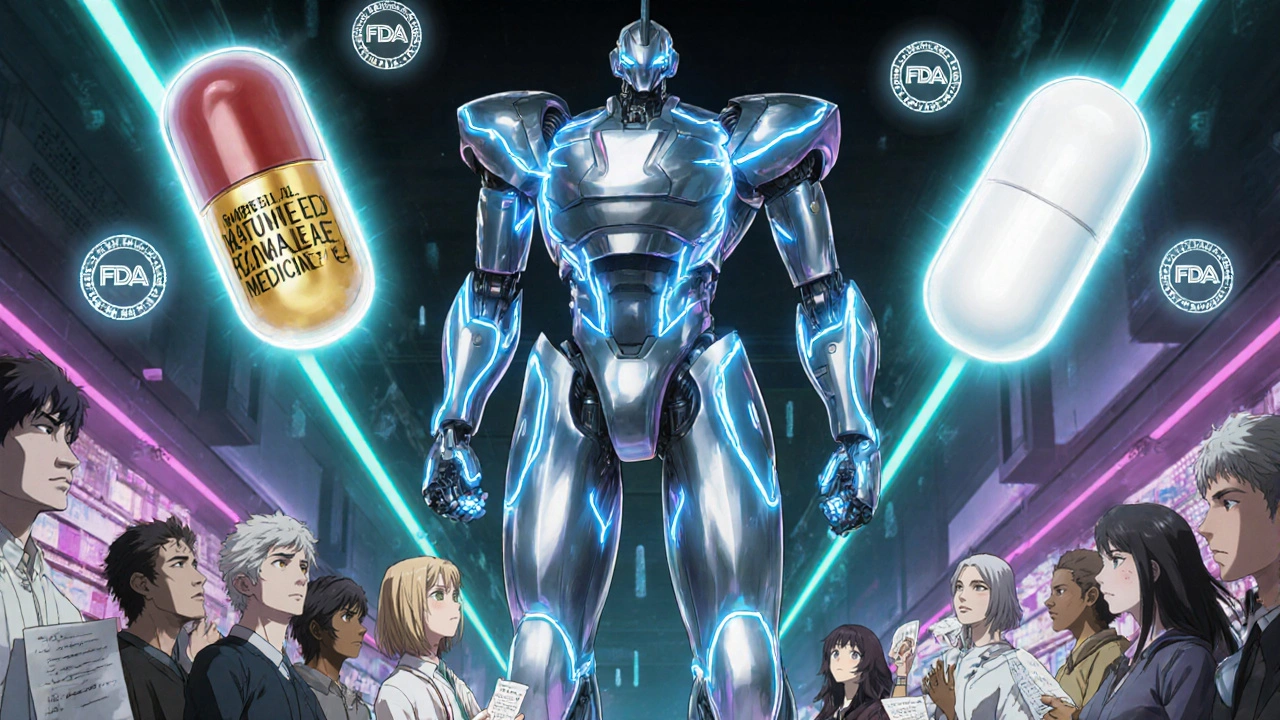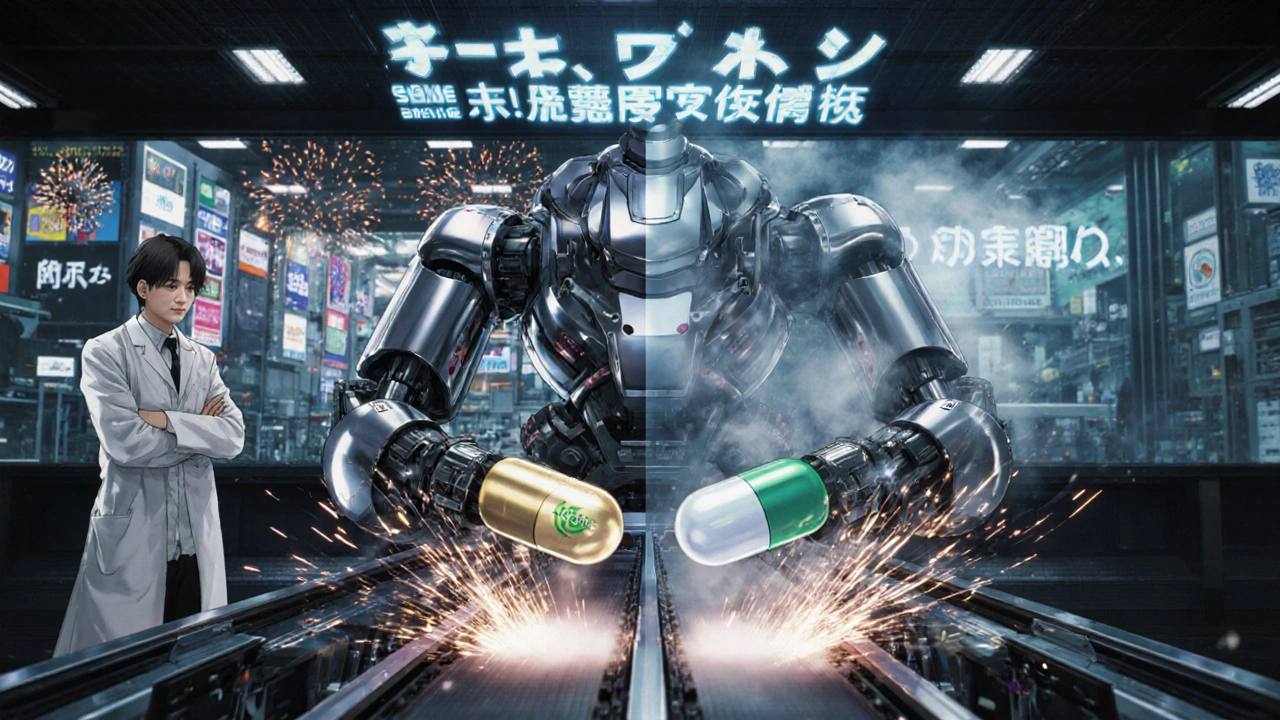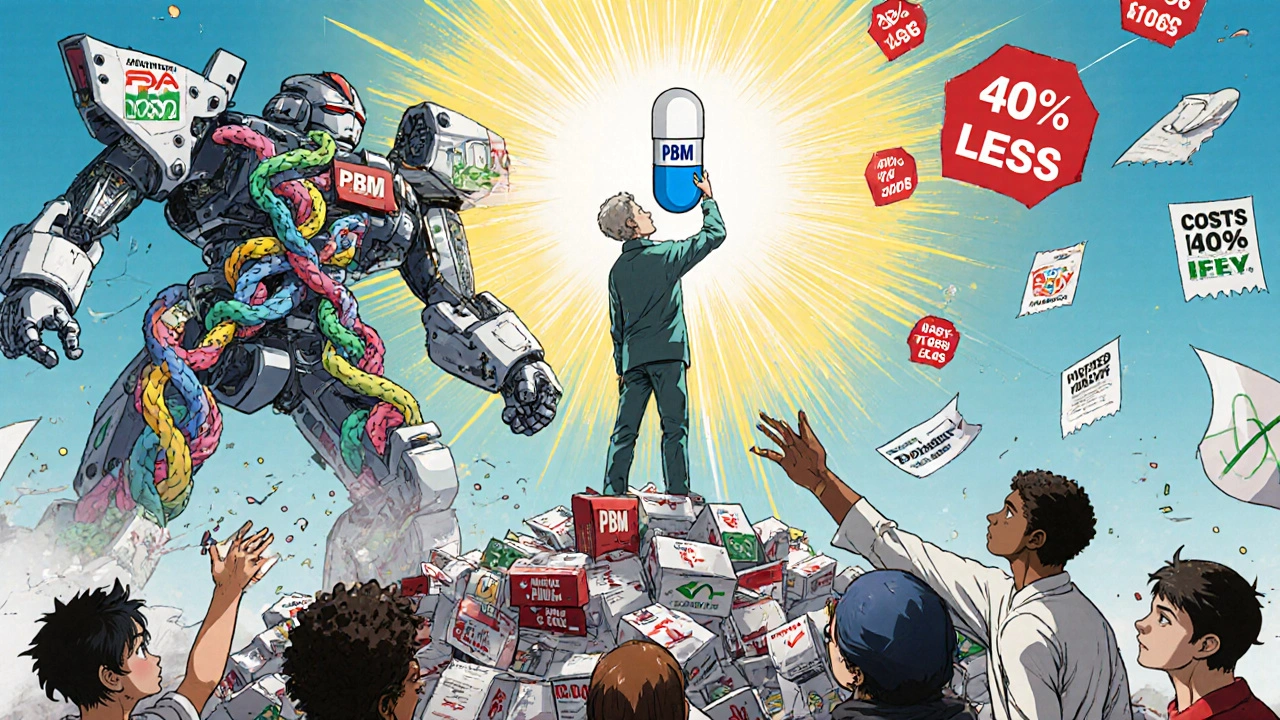Authorized Generic Pricing: Why They Cost Less Than Brand-Name Drugs
 Nov, 24 2025
Nov, 24 2025
Ever wondered why a pill that looks and works exactly like your brand-name medication costs half as much? It’s not a trick. It’s an authorized generic. And if you’re paying for prescriptions, you need to understand how they work - especially when your out-of-pocket bill is stacking up.
What exactly is an authorized generic?
An authorized generic isn’t a copy. It’s the real thing - made by the same company that produces the brand-name drug, in the same factory, using the same ingredients and quality controls. The only difference? It’s sold without the brand name on the bottle.
The U.S. Food and Drug Administration (FDA) requires that authorized generics be identical to the original brand in every way: dosage, strength, safety, how it’s absorbed, and how it works in your body. There’s no cut corners. No shortcuts. Just a different label.
These drugs are approved under the original brand’s New Drug Application (NDA), not the usual Abbreviated New Drug Application (ANDA) that traditional generics use. That means they skip the extra review process. They’re the exact same product, just marketed under a different name - usually by the brand company itself or a partner they’ve licensed it to.
Why do they cost less than the brand?
Brand-name drugs carry a lot of hidden costs: advertising, fancy packaging, sales reps visiting doctors, patent protection, and years of R&D amortized into each pill. Authorized generics don’t pay any of that.
They’re made on the same production line, but without the marketing budget. No TV commercials. No glossy brochures. No expensive brand loyalty campaigns. That savings gets passed on - usually 4% to 8% less than the brand price at retail.
But here’s the twist: sometimes the discount looks bigger than it is. Pharmacy Benefit Managers (PBMs) - the middlemen who negotiate drug prices for insurers - can place authorized generics on the same formulary tier as the brand. That means you might still pay the same copay as you would for the brand, even if the pharmacy paid less for the generic. It’s not always about the sticker price; it’s about how your insurance plan structures your costs.
How do they fit into the drug market?
Authorized generics entered the scene as a strategic tool after the Hatch-Waxman Act of 1984 gave the first generic company 180 days of exclusive rights to sell a drug after patent expiration. That exclusivity period used to let the first generic set a high price with little competition.
But brand companies didn’t want to lose all their market share. So they started launching their own authorized generics at the same time. Suddenly, instead of one generic competitor, there were two: the traditional generic and the authorized version. That forced prices down faster.
Studies show that when an authorized generic enters the market alongside a traditional generic, pharmacy invoice prices drop by 13% to 18% compared to when no authorized generic is present. Retail prices fall too - by 8.4% to 10.3% in Medicaid data. The presence of an AG keeps the first generic from charging a premium during its exclusivity window.
Take the EpiPen. In 2016, after public outrage over price hikes from $100 to $600, Mylan released an authorized generic at $300 - half the brand price. It didn’t fix everything, but it gave people a cheaper option immediately.

Are authorized generics the same as regular generics?
No - and that’s the key point.
Regular generics are made by different companies after the brand patent expires. They must prove they’re bioequivalent to the brand, but they’re often made in different factories, sometimes overseas, and under separate FDA approvals.
Authorized generics? Same factory. Same batch. Same quality control logs. They’re not just equivalent - they’re clones.
That’s why some patients report fewer side effects or more consistent results switching from brand to authorized generic than to a regular generic. It’s not placebo. It’s the same exact product.
Who benefits the most from authorized generics?
Patients do - if they know how to ask for them.
A 2022 analysis of 1.2 million Medicare Part D patients found that when authorized generics were placed on the same tier as traditional generics, medication adherence improved by 8.2 percentage points. Why? Because patients trusted the drug. They knew it was the same thing. No confusion. No fear of it not working.
Insurers and employers benefit too. Lower drug costs mean lower premiums and fewer claims. Pharmacies benefit from higher margins on authorized generics compared to branded drugs.
But here’s the catch: you won’t always see them on your prescription label. Your pharmacist might automatically swap in a traditional generic unless you specifically ask for the authorized version. That’s because PBMs often push the cheapest option - which isn’t always the authorized generic.
Why aren’t authorized generics more common?
Brand companies use them strategically. Not every drug gets one. They’re most common when:
- The brand has high sales volume
- The drug has strong patient loyalty
- The patent is expiring soon
- The manufacturer wants to control the transition to generics
According to IQVIA, 67% of brand manufacturers have used authorized generics for at least one drug since 2010. But only about 12% of the $60 billion U.S. generic market consists of authorized generics. That means they’re powerful, but not everywhere.
Some experts worry they’re used as a tactic to delay broader competition. For example, a brand company might offer an authorized generic to a generic manufacturer in exchange for dropping a patent challenge. That keeps other generics off the market longer. The FTC has flagged this as a potential anti-competitive practice.

How to get an authorized generic
It’s simple - ask.
When your doctor prescribes a brand-name drug, say: “Is there an authorized generic available?”
When you pick up your prescription, ask the pharmacist: “Is this the brand, a regular generic, or an authorized generic?”
Check your insurance formulary. Some plans list authorized generics separately. If they’re not listed, call your insurer and ask if they cover them - and at what tier.
Don’t assume your pharmacist will automatically offer it. They’re often incentivized to dispense the cheapest option - which might be a traditional generic, even if the authorized version is cheaper for you.
What’s changing in 2025?
The Inflation Reduction Act, which caps out-of-pocket drug costs for Medicare beneficiaries at $2,000 a year, has made authorized generics even more valuable. Seniors are now more price-sensitive than ever. Pharmacies and PBMs are starting to prioritize them in formularies.
The FDA has also sped up reviews for drugs with few generic options - which indirectly helps authorized generics stay competitive. More transparency laws are coming too. Thirty-two states now require PBMs to explain how they set maximum allowable costs for drugs, including authorized generics.
That means more visibility. More control. More savings - if you know where to look.
Bottom line
Authorized generics aren’t a loophole. They’re a legitimate, FDA-approved way to get the exact same medicine at a lower price. They’re not always cheaper than regular generics, but they’re often more consistent and trusted.
For patients, they’re a tool to reduce costs without sacrificing quality. For the system, they’re a way to drive down prices faster than traditional generics alone.
Don’t wait for your pharmacy to offer one. Ask for it. Know what’s in your bottle. And don’t let a brand name fool you into paying more than you need to.
Are authorized generics safe?
Yes. Authorized generics are identical to the brand-name drug in every way - same active ingredients, same manufacturing process, same quality controls. They’re made in the same facility, often on the same production line. The FDA requires them to meet the exact same standards as the brand.
Do authorized generics work as well as brand-name drugs?
They work exactly the same. Since they’re made from the same formula, by the same company, with the same equipment, there’s no difference in effectiveness. Many patients report fewer side effects switching to an authorized generic than to a regular generic - not because it’s better, but because it’s the same drug they’ve always taken.
Why is my pharmacy giving me a different generic than last time?
Pharmacies often switch between different generic versions based on what’s cheapest or what’s in stock. Authorized generics aren’t always the default option. If you prefer the authorized version, ask for it by name. Your insurance may cover it at the same cost as a regular generic - or even lower.
Can I ask my doctor to prescribe an authorized generic?
Yes. Doctors can write prescriptions for specific drug versions, including authorized generics. Just say: “Can you prescribe the authorized generic version of [drug name]?” They’re legally allowed to do this, and many will if it saves you money.
Are authorized generics covered by insurance?
Most insurance plans cover authorized generics, but they may place them on different tiers than the brand. Some treat them like regular generics. Others treat them like the brand. Always check your formulary or call your insurer to confirm your copay before picking up your prescription.
Philip Crider
November 24, 2025 AT 23:54Diana Sabillon
November 25, 2025 AT 21:31neville grimshaw
November 27, 2025 AT 19:06Carl Gallagher
November 28, 2025 AT 16:01bert wallace
November 29, 2025 AT 05:47Neal Shaw
November 29, 2025 AT 09:45Hamza Asghar
November 29, 2025 AT 15:17Karla Luis
November 29, 2025 AT 22:04jon sanctus
November 30, 2025 AT 19:51Kenneth Narvaez
December 2, 2025 AT 00:54Christian Mutti
December 3, 2025 AT 05:50Liliana Lawrence
December 4, 2025 AT 08:52Sharmita Datta
December 5, 2025 AT 16:26mona gabriel
December 5, 2025 AT 17:35Phillip Gerringer
December 5, 2025 AT 20:03jeff melvin
December 6, 2025 AT 21:06Matt Webster
December 8, 2025 AT 00:28Stephen Wark
December 8, 2025 AT 14:04Daniel McKnight
December 8, 2025 AT 16:03